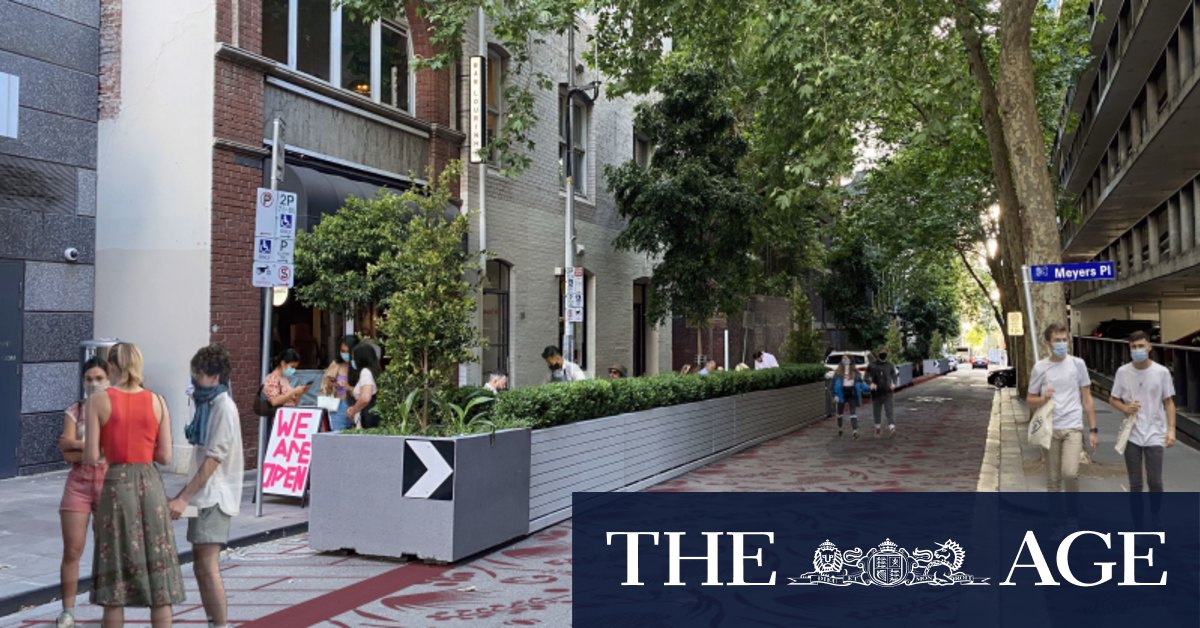An attempt to turn Melbourne’s “Little” streets into pedestrian-friendly promenades is failing because motorists refuse to share the busy laneways and obey new speed limits.
Hmmm. I’ve walked these streets regularly and I didn’t know about the new rules.
As usual, it feels like the devil is in the details.
I don’t think it’s obvious to anyone in those areas that there are new rules. Signage etc is probably part of the problem. If you’re a motorist in the CBD, you’re managing and paying attention to a lot. It’d be pretty easy to miss a small sign about a whole new set of rules, especially if no one else knows and isn’t behaving differently.
The one place where speeds have reduced is notable because there is just so much pedestrian foot traffic through there that a safety in numbers effect has to kick in for pedestrians. I suspect that has nothing to do with the new rules.
In the end though, the idea of more pedestrian friendly roads (ie car ways) is, I suspect, a paradox. A car is intrinsically “unfriendly” (ie deadly) to pedestrians who always naturally give way to car out of a sense of self preservation. This is a city that only a few years ago had a motorist go on a killing spree on the CBD just with their car (to which the govt is responding with car blocking poles everywhere).
Speed bumps could help. Very obvious and large signage stipulating that these are pedestrian areas in which cars are free to try to get through could help too.
One change that could maybe go a long way would to rip up the bitumen and replace it with a pedestrian friendly surface. Everyone would pick up on that cue: human not car area.
Part of the issue here though is that the Council don’t want to make a bold decision and are trying to tentatively explore without commitment. With such measures, the inherent power dynamic between cars and pedestrians is probably always going win out.
@maegul @ajsadauskas yeah the design doesn’t cue this at all. I was on one of them recently too and didn’t notice the signs or realise it was meant to be a pedestrianised street. There was a raised footpath, so I stayed on it. Making the whole street level, probably with discreet bollards to keep some safer space for pedestrians, makes it much more obvious.
@jroper @maegul @ajsadauskas@lemmy.ml An example of somewhere that has done this pedestrian mixed space well in Australia is Hornsby in NSW, along Florence Street.
The street is paved with stone rather than gravel; it’s level with the footpath; the area where cars are permitted demarcated with bollards rather than a gutter, to as well as with seating and planters.
Oh, and you know who is (or at least was) the local mayor of Hornsby Shire Council?
Philip Ruddock.
Yep, that Philip Ruddock.
It’s not that difficult to do a mixed pedestrian space well.
If even someone like Philip Ruddock can figure it out, then frankly Melbourne City Council has no excuses.
#walkability #Hornsby #NSW #pedestrian #walking #cities #urbanism
In Poland pedestrians were given the priority over cars on marked pedestrian crossing without traffic lights. Idk if that lessened the number of people being ran over (most probably yes) but it sure is nice to not having to jump like rabbit while going anywhere.
@ajsadauskas@lemmy.ml The Melbourne City Council has just discovered that sticking up some signs that say “shared zone” isn’t enough to make a great shared pedestrian space.
"Flinders Lane, Little Collins, Little Bourke and Little Lonsdale streets became “shared zones” in September 2020, with pedestrians given right of way and speed limits lowered from 40 km/h to 20 km/h.
"For the most part, pedestrians and drivers were unaware of the priority rules within the shared zone. Pedestrians generally waited for cars to pass before crossing the street and drivers were rarely observed yielding to pedestrians.”
“The review says the council should install more “traffic-calming” designs – like raised street sections, planter boxes or dining parklets – and paint or pave the streets to differentiate them from regular roads, where vehicles have priority.”
#walkability #walking #streets #cities #Urbanism #UrbanPlanning #walk #cycling #bikes #CompleteStreets
@ajsadauskas@lemmy.ml Ping @betterstreetsnsw in case you haven’t seen this article already?






